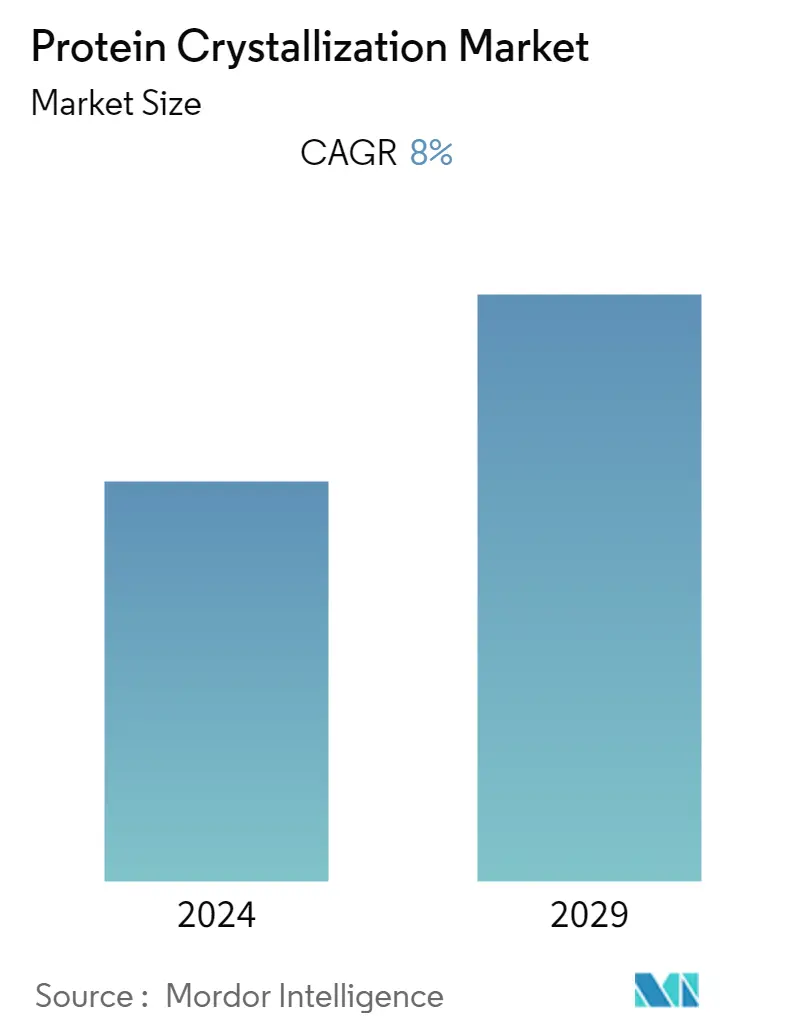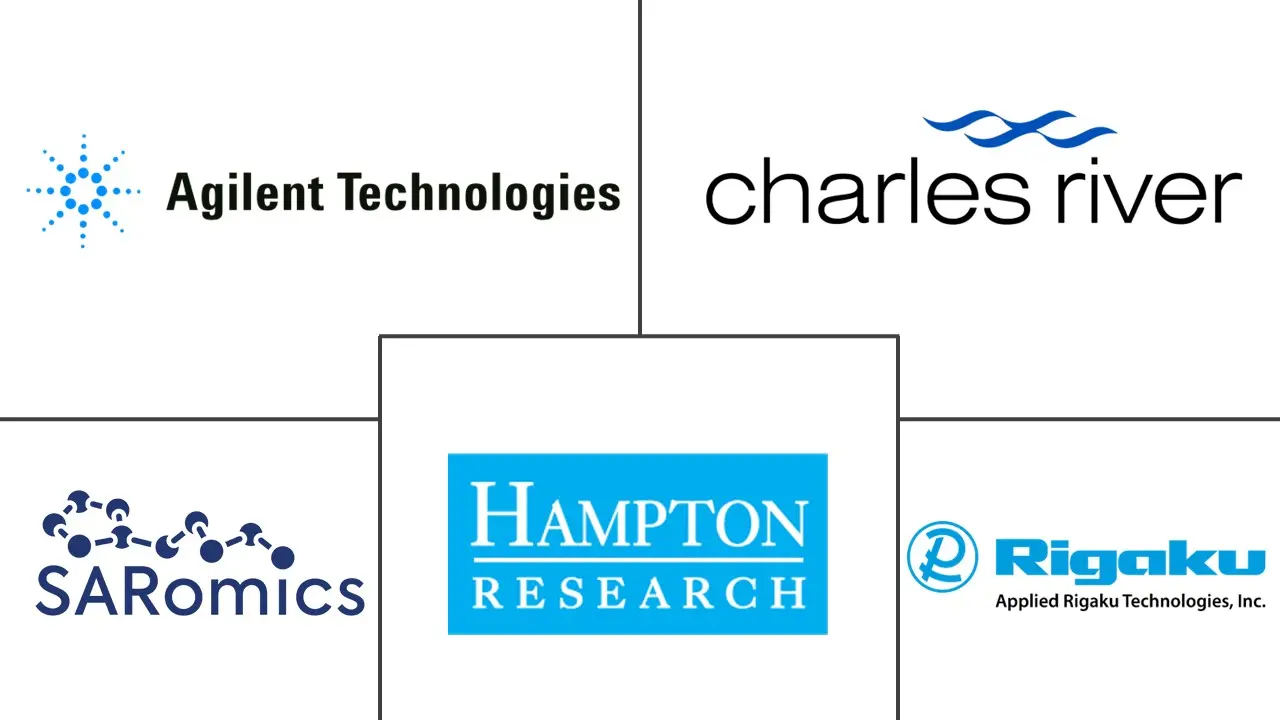Market Size of Protein Crystallization Industry

| Study Period | 2019 - 2029 |
| Base Year For Estimation | 2023 |
| Forecast Data Period | 2024 - 2029 |
| CAGR | 8.00 % |
| Fastest Growing Market | North America |
| Largest Market | Asia-Pacific |
Major Players
*Disclaimer: Major Players sorted in no particular order |
Need a report that reflects how COVID-19 has impacted this market and its growth?
Protein Crystallization Market Analysis
The protein crystallization market is projected to register a CAGR of 8% during the forecast period.
COVID-19 significantly impacted the growth of the protein crystallization market as the rise in cases of infectious diseases among the population increased the demand for vaccines and protein-based therapies to overcome infection. The extensive use of protein crystallization to develop COVID-19 drugs has contributed to the market's growth. For instance, in January 2021, Elasmogen identified protein-based drugs to potentially stop COVID-19 infections through a partnership with the University of Minnesota. Thus, the agreement was signed between market players and the research institute with a focus on research for COVID-19 protein therapeutics, which created the need for protein crystallization. Therefore, during the initial pandemic, there was a slight decline in the studied market during the early pandemic due to supply chain restrictions and manufacturing delays. However, the market has gained traction due to increased demand for protein crystallization during the late pandemic. Furthermore, the market has attained a significant pace post-pandemic due to the increased development of antiviral drug development based on the data analysis of expression of genes, chemical structure, molecular pathway, and protein interaction mapping.
The factors driving the growth of the market include increasing investment in the research and development of biopharmaceuticals and increasing adoption of protein therapeutics.
The increasing demand for protein therapeutics is a key factor driving the market's growth. This is because protein therapeutics have become integral to the healthcare industry over recent years. Due to their low immunogenicity and specificity, protein therapeutics are extensively used to treat various major diseases, such as cancer. The increasing demand for protein-based drugs and therapeutics has led the manufacturers to implement growth strategies to gain the major market share, thereby increasing the market's growth. For instance, in January 2022, Amgen partnered with Generate Biomedicines to discover and create protein therapeutics for five targets across several therapeutic areas and multiple modalities. Such research and development activities create the need for protein crystallization products and services, thus driving the market's growth.
Furthermore, the increasing demand for protein therapeutics is due to the increasing prevalence of chronic disease and rising awareness regarding protein therapeutics' efficiency. According to the American Cancer Society 2023, it is estimated that 1,958,310 new cancer cases are projected to occur in the United States in 2023. Such a huge incidence of cancer in developed regions creates a need to develop novel and efficient drugs, and as protein crystallization is widely used in drug discovery and development, it is expected to propel the growth of the market.
Advancements in protein crystallography and the implementation of standard protocols create a lucrative opportunity for market growth. Increasing application fields and areas of protein crystallization for tailoring effective drug candidates contribute to the market's growth over the forecast period. For instance, in October 2022, the Tokyo Institute of Technology developed a new cell-free protein crystallization (CFPC) method that provides major developments in the field of structural biology, including direct protein crystallization. The technique enables the analysis of unstable proteins that cannot be studied using other conventional methods.
Thus, owing to the abovementioned factors such as rising advancements in protein crystallization, rising incidence of chronic diseases, and rising initiatives from the key market players is expected to show positive growth of the market studied over the forecast period. However, the lack of skilled professionals and the high cost of instruments may impede the growth of the market.

